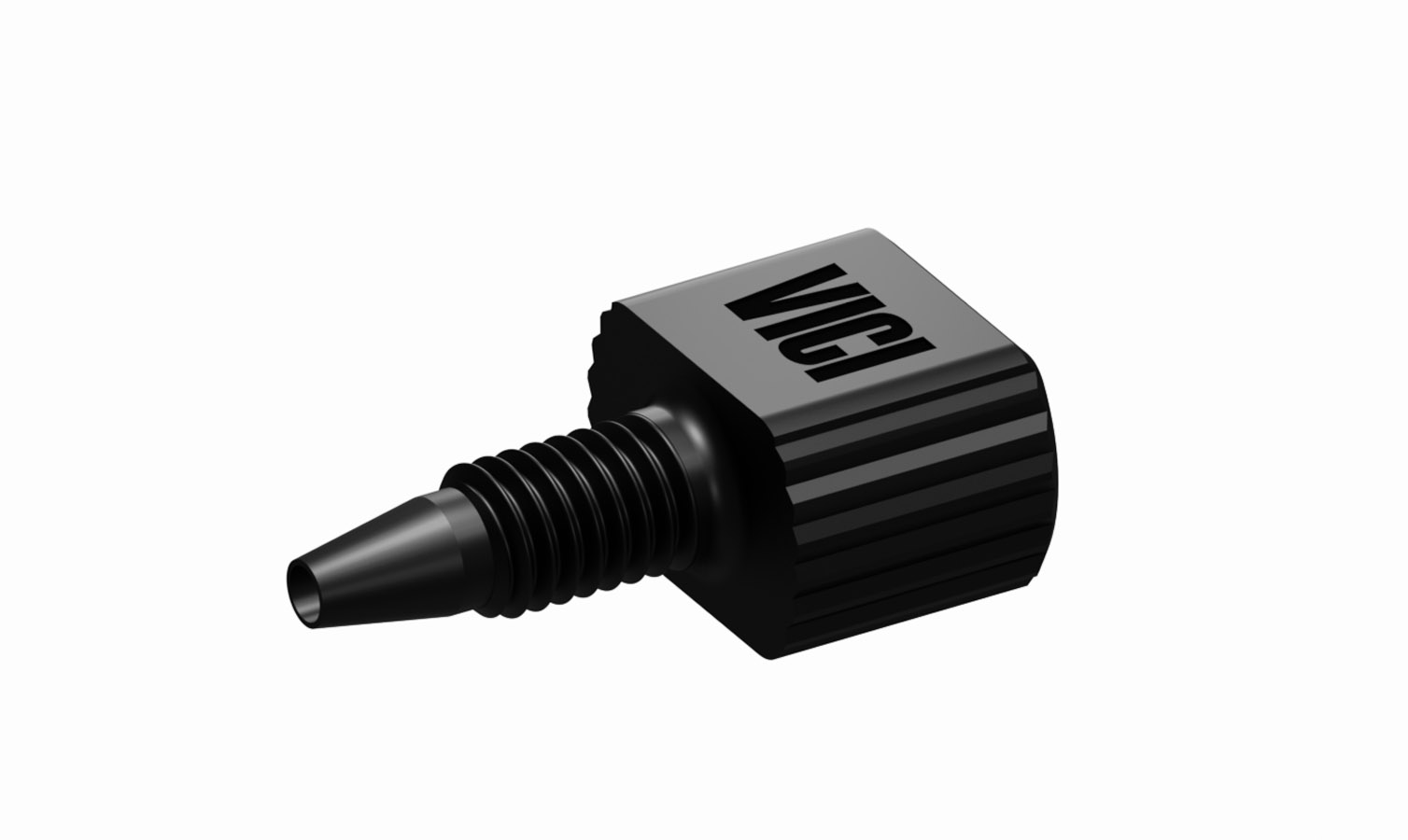
VICI AG International, a Swiss manufacturer of valves and fittings for biomedical instruments, has produced a one-piece fitting for use in liquid chromatography systems made of Victrex’s carbon fiber reinforced polyaryletherketone (PAEK) material. According to VICI, the injection molded fitting can withstand pressures of up to 1,000 bar (14,500 psi).
The pressures required in liquid chromatography have been rising steadily for over five years, becauset the particles of the separation materials (usually modified silica gels) now frequently have a grain size of two micrometers or less, the company added. These higher pressures occur between the pump and column in liquid chromatography systems and require the stainless steel connecting capillaries used for the high pressure range to be fastened with appropriate fittings.
Victrex says that, when compared to unreinforced polyether ether ketone (PEEK), using its reinforced material prevents the fitting from breaking apart when it is being tightened, since the carbon fibers are aligned in parallel by the injection process. In the past, this has only been possible in the high pressure range using conventional two-piece ‘nut and ferrule’ fittings or complicated one-piece fittings.
‘Assisted by Victrex and its material and processing expertise, we have developed and commercialized a new product in this segment to offer users greater flexibility, reusability and above all easier handling compared to steel screw fittings. Also, being manufactured by injection molding, it is favorable in cost terms, too,’ explains Hütz. ‘We have performed tests showing that, when tightened by hand, the new Victrex HT fittings can be used at 500 bar (7,250 psi) and above. When tightened with a tool, they can also be reused at least three times after first use at a test pressure of 950 bar (13,780 psi).’
This story uses material from Victrex, with editorial changes made by Materials Today. The views expressed in this article do not necessarily represent those of Elsevier.





